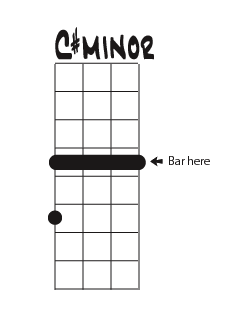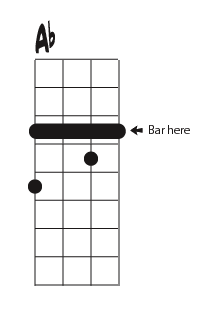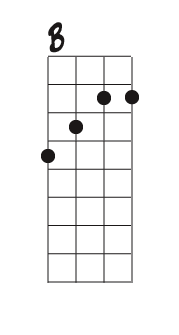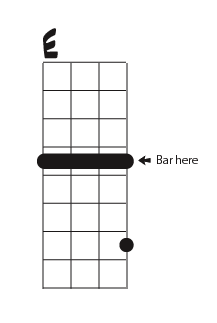Not all "professionals" are bad, DM, but I would certainly take some time and get to know who was doing the work, and check out some of their finished pieces before submitting my axe to their tender ministrations. ![]()
26 2009-09-18 19:44:26
Re: Polished frets? (12 replies, posted in Guitars and accessories)
27 2009-09-17 21:14:08
Re: Cheating with chords? Newbie guitar choice? (33 replies, posted in Acoustic)
Good job losing the nails. As far as all us guys not getting it ![]() , I kept mine long for utilitarian reasons, but relented when I realized how much in the way they were after I got serious about playing. Now the left hand is kept clipped to about 1/16" so my finger tips will make a "pad" when I press down on the strings. Not the same thing as beauty, but it did take some effort to give them up.
, I kept mine long for utilitarian reasons, but relented when I realized how much in the way they were after I got serious about playing. Now the left hand is kept clipped to about 1/16" so my finger tips will make a "pad" when I press down on the strings. Not the same thing as beauty, but it did take some effort to give them up. ![]() I keep the right hand trimmed for classical style picks, like this: http://www.mangore.com/thing.html
I keep the right hand trimmed for classical style picks, like this: http://www.mangore.com/thing.html
I play Uke primarily, and I have run into the same issue with "which fingers" for different chords - over time you'll see that in some situations you *have* to use different fingers to get your speed up between certain chord changes, or for certain moves on the neck.
Keep at it!
28 2009-09-17 20:54:54
Re: Townes Van Zandt (9 replies, posted in Bands and artists)
If you like Townes, you should also check out Guy Clark.
29 2009-09-10 19:30:56
Re: Can anyone sing?? (21 replies, posted in Chordie's Chat Corner)
For anyone who is interested in improving their singing, even just for "fun", I would suggest you look in your community for a choir or large choral group to join.
Singing in a big group will build your confidence! Often a skilled Director will give vocal instruction as part of the program, this is in essence a *free voice lesson* if you listen, and then practice and apply what you've learned. Simply being a participant will most likely improve your ability to find and sustain pitch with your voice, and improve your ear for harmony.
Don't expect instant miracles, a good voice can take as long to train as any instrument. ![]()
30 2009-09-10 11:51:28
Re: Basic Strumming Question (7 replies, posted in Acoustic)
Looks like the strumming question is covered... so how about some chord practice to go along with it? Try Hey Joe and Wild World... Hey Joe is a cycle of 5ths: C-G-D-A-E, Wild World is a cycle of 4ths: Am-D7-G-CM7-F. Good practice both for the chord positions and changes, even if you never play either one outside of rehearsal.
Strum away!
31 2009-09-09 18:47:53
Re: has anyone ever played a hammered dulcimer? (2 replies, posted in Other string instruments)
I can't lay down an actual $$ figure, but they are *very* expensive (for my budget, anyway ![]() ). Not difficult to learn the basics, but challenging to master. Do you have a local builder, or are you looking online?
). Not difficult to learn the basics, but challenging to master. Do you have a local builder, or are you looking online?
Think about the types of music you want to play, and get one with enough scales to accommodate your needs.
If you do decide to buy, try out some different hammers - some folks do better with long, short, big heads, tapered heads... there are almost as many styles of hammers as there are players.
32 2009-08-31 12:10:39
Re: Baritone Uke Strings (7 replies, posted in Other string instruments)
G C E A is standard for Soprano, Concert. and Tenor size ukes. Baritones are tuned the same as the highest four strings on a guitar - D G B E.
33 2009-08-28 12:27:25
Re: ukulele chords need advice (15 replies, posted in Other string instruments)
OK, I am finally getting the "traditional" E chord shape. I realized that my fingernails were getting in the way of me getting a good vertical approach to the strings, so I've started cutting my left nails back to nothing. That has allowed me to get my fingertips almost perpendicular to the fretboard, which really helps with cramming them all into that one fret. I've also found I need to rotate my wrist clockwise a bit from my normal position to help get my fingers "lined up".
I run out of room to do it around the 5th fret on my concert uke.
In general, I'm using a better hand position for all my chording now, and trying to defeat this E helped. I'm keeping my thumb further down on the back of the neck, which makes my hand stand off from the fretboard better. I'm getting far fewer cases of notes being dulled or deadened by fretting fingers "touching" adjacent strings. Practice practice practice!
35 2009-08-28 12:04:44
Re: North Carolina Playlist (21 replies, posted in Chordie's Chat Corner)
Thanks for the warm welcome, Topdown and Cameron. I had noticed a lot of "NC" activity here... I've been lurking for quite a while, finally decided I was ready to jump in!
Topdown, if you can stand another round, I'll buy. Cheers!
36 2009-08-27 13:36:30
Re: North Carolina Playlist (21 replies, posted in Chordie's Chat Corner)
I'm up in the mountains, near Asheville and Black Mountain. ![]()
37 2009-08-27 12:03:22
Re: what does one chord over another mean ? (16 replies, posted in Music theory)
...on a piano the left hand would play the B bass note, the right hand would play an A chord.
Exactly - the note under the slash is your bass note. Adding it into the chord elsewhere will give you a different sound than playing it "on the bottom".
38 2009-08-27 12:00:13
Re: North Carolina Playlist (21 replies, posted in Chordie's Chat Corner)
(Another North Carolinian here!)
The first one I thought of is Wagon Wheel by Old Crow Medicine Show.
39 2009-08-20 12:50:52
Re: approach to learning songs (9 replies, posted in Acoustic)
I would be bored to tears working on only one thing at a time... but that's just me. ![]()
I try to pick songs that will hold my interest over time, and teach me something new - a new chord, a new rhythm, a new progression. Mix it up, keep a few things on the rehearsal list that stretch your skills, and keep a number or two you can play well - even if it's "Wheels on the bus".
40 2009-08-13 12:09:34
Re: uke suggestions (7 replies, posted in Other string instruments)
...even if you never get around to learning all the new fingerings.
Actually, the Uke uses the same intervals for the strings, so the chord shapes don't change, they just have a new name. A "D" chord shape on a traditional guitar becomes a "G" chord on a soprano/concert/tenor Uke. It does take a little getting used to having only the four highest pitched strings to work with (a traditional guitar "G" becomes a "C", but you only use one finger!) but the basics are all uniform between the instruments, you are merely transposing the chord names to match the uke's tuning.
Guitar: E A D G B E (Intervals low to high: 4-4-4-3-4)
Ukeulele: X X G C E A (X-X-4-3-4)
41 2009-08-06 11:28:59
Re: need help (26 replies, posted in Acoustic)
As others have said, stick with it. I "noodled around" for a lot of years, never learning more than a basic strum pattern or two and a handful of chords.
A couple of years ago, I got serious and started *really* practicing, at least an hour every day, and with specific goals in mind. (i.e. - working on a specific strum, a particular chord change, etc.) I'm at a point now where I can play quite passably if I don't sing, or I can sing along and stumble through the accompaniment. ![]()
I expect the two to come together eventually. ![]() It just takes time, patience and practice!
It just takes time, patience and practice!
42 2009-08-04 20:12:53
Re: What are C#m and Ab chords on the Uke please? (5 replies, posted in Other string instruments)
Now the C# minor - slide the "form" of the A flat up a fret, and lift your finger off the second string... C# minor!

43 2009-08-04 20:00:29
Re: What are C#m and Ab chords on the Uke please? (5 replies, posted in Other string instruments)
The A-flat is just a G chord shape 1 fret higher. You'll need to fret the 4th string for a C, instead of the open G. I usually make it a partial bar chord, like this:

44 2009-08-01 13:40:44
Re: Uke Question, Could use some advise... (10 replies, posted in Other string instruments)
I play a Tenor Ukulele with C tuning. Many of the songs I would like to play listed here, after transposing to C tuning, don't sound right. Is anyone else running into this or is it my inexperience. Would appreciate any advise on how to work with the songs to make them sound right.
Part of what makes a song sound "right" is the relation of the chords to each other on the instrument - did the artist move UP or DOWN the scale to reach a certain pitch? If you only know one position for each chord, you might not be able to duplicate the original "sound" in any key! Try playing the songs in the original keys, and listen to the recording you are trying to get the "feel" of - what did the artist do? Sometimes a "sound" is dependent on which note is at the top or bottom of the chord, as well as the direction the progression takes.
45 2009-07-21 11:42:31
Re: To read or not read music, that is the question. (22 replies, posted in Music theory)
Like many of the "geezers" here ![]() I learned to read notation at the piano bench as a youngster. As for tab, it is great if you are trying to figure out exactly the way someone did a certain line, or a certain chord, because it gives you instrument-specific information that standard notation can't. I prefer standard notation for sight reading, or even just "chords-n-words" for jamming.
I learned to read notation at the piano bench as a youngster. As for tab, it is great if you are trying to figure out exactly the way someone did a certain line, or a certain chord, because it gives you instrument-specific information that standard notation can't. I prefer standard notation for sight reading, or even just "chords-n-words" for jamming.
Also many times players who are read music well DEPEND on the sheetmusic and are reluctant to learn songs without sheetmusic.
Move on to basic theory, and you'll lose that crutch pretty quick. ![]()
46 2009-07-21 11:27:42
Re: Can't tune it (27 replies, posted in Acoustic)
Sounds like the intonation is out. It needs a set up.
Yup. If the open strings are in tune, but the fretted notes are not, there is an intonation problem - the strings are either too long (flat when fretted) or too short (sharp when fretted). On an Ovation/Applause, this would require a truss rod adjustment to fix as the bridge is not adjustable IIRC.
Good Luck!
47 2009-07-20 13:04:46
Re: ukulele chords need advice (15 replies, posted in Other string instruments)
ozmoid,
you play your E like me. I cannot do the first way either.ken
Three of my fingers just will not cram into a single fret like that. I got a Concert size uke thinking "bigger will be easier" and I still don't fit. ![]() I keep practicing the position, time will tell...
I keep practicing the position, time will tell...
48 2009-07-18 13:07:18
Re: ukulele chords need advice (15 replies, posted in Other string instruments)
(uke is tuned in C)
The B is pretty easy:

This is one you can slip up and down the neck and get a bunch of chords from! Bar the fret closest to the nut (where the two strings are pressed in the same fret) and lift your finger off the G string, and you have a 7th. Put that back and lift the C string, you have a minor.
The E is difficult for me, I can't get my fingers on the fret like this:

So I do this instead:

If you are using the D tuning for your uke, just move everything 2 frets closer to the nut.
